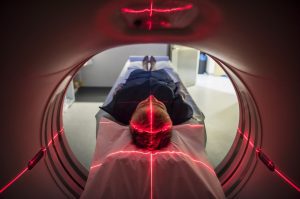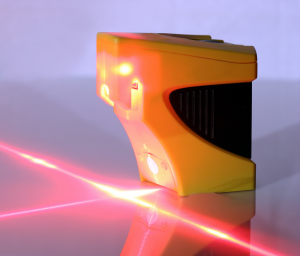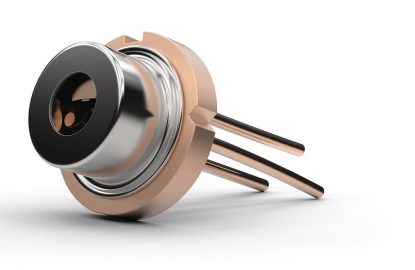Diode lasers stand at the forefront of laser technology, offering versatility and efficiency. Continuously evolving, these solid-state lasers such as red laser diodes are emerging as the preferred laser technology for their unparalleled tunability, precision, and efficiency—all neatly packaged in a compact size without compromising on output or costs.
While red, green, and blue reign as the most common laser colors, the spectrum of available laser diodes extends far beyond, catering to specific application needs. Our new blog series sets out to explore diverse applications for a wide range of laser diodes by color. In this first installment of the series, we will talk about red laser diodes and explore their applications.
Red Laser Diode Applications
ProPhotonix offers 633nm, 635nm, 660nm, 670nm and 690nm red laser diodes which are available with power levels from 5mW up to 2200mW. From revolutionizing medical treatments to optimizing communication networks, driving precision in manufacturing, and aiding scientific exploration, the applications of red laser diodes are as diverse as they are impactful.
1. Medical Applications
Red laser diodes make good laser sources for several medical and biomedical applications including flow cytometry, photodynamic therapy (PDT), patient positioning in medical and dental instruments radiotherapy. Red laser diodes are also used for a whole range of laser therapies as they are small, inexpensive, flexible and have low power requirements. These laser diodes are suitable for fiber coupling due to their small emitter size typically around 80μm making them ideal light sources for biomedical and sensing applications.

In fact, red laser diodes were the only laser diodes applicable for flow cytometry until the turn of the century (1). 675 nm red laser diodes are also used to minimize the appearance of facial acne scars (2) and facial melasma (3).
2. Communications & Data
The integration of red laser diodes into optical communication systems, especially in fiber optics, empowers high-speed data transfer. These diodes offer unparalleled advantages in data transmission, bolstering the efficiency of communication networks. As photodiodes respond better to longer wavelengths and red laser diodes are significantly cheaper than other colors, they are also used extensively for barcode scanning. Their wavelength can also be adjusted for a specific value by controlling temperature, which makes them ideal light sources for quantum technology.
3. Industrial & Manufacturing Applications
Industrially, red laser diodes have become indispensable. They drive laser cutting and engraving processes with unmatched accuracy especially for paper, chocolate, colored fabric, cardboard and plywood.

Surveying instruments and alignment tools also harness the precision of red laser diodes. Red laser diodes aid in aligning components, ensuring accuracy in assembly, and facilitating seamless manufacturing processes. Quality control and inspection benefit significantly from their reliability and precision.
4. Scientific Research
Red laser diodes contribute extensively to experiments and projects such as exploration of molecular structure, effects of photobiomodulation, and various applications of red light therapy. Their use in diverse experiments highlights their adaptability and reliability in supporting groundbreaking research. High-power and high electrical-to-optical power conversion efficiency red laser-diode lamps have been developed as a new type of light source for plant production. (4)
High-power red laser diodes are also of particular interest for laser projection, holographic heads-up displays, targeted drug delivery in the medical industry and aiming beams for fiber lasers. (5)
Conclusion
It’s evident that there is a myriad of applications of red laser diodes ranging from medical, communications to industrial and more. ProPhotonix offers 633nm, 635nm, 660nm, 670nm and 690nm red laser diodes which are available with power levels from 5mW up to 2200mW.
As a laser diode integrator as well as a distributor with more than two decades of experience in laser diode technology, ProPhotonix is well-positioned to support you in selecting the optimum laser diode for your application. Our technical team specializes in understanding each aspect of your specification, quickly providing solutions that offer the best value for your application. Contact us now for free expert advice.
Sources:
- William G. Telford, Chapter 15 – Lasers in Flow Cytometry, Editor(s): Zbigniew Darzynkiewicz, Elena Holden, Alberto Orfao, William Telford, Donald Wlodkowic, Methods in Cell Biology, Academic Press, Volume 102, 2011, Pages 373-409, ISSN 0091-679X, ISBN 9780123749123, https://doi.org/10.1016/B978-0-12-374912-3.00015-8. (https://www.sciencedirect.com/science/article/pii/B9780123749123000158)
- Alter, I., Pennati, B.M., Madeddu, F. and Zingoni, T. (2023), The 675 nm laser for the treatment of facial acne scars in dark skin type. Skin Res Technol., 29: e13514. https://doi.org/10.1111/srt.13514
- Coricciati, L, Gabellone, M, Donne, PD, Pennati, BM, Zingoni, T. The 675-nm wavelength for treating facial melasma. Skin Res Technol. 2023; 29:e13434. https://doi.org/10.1111/srt.13434
- Yamazaki, A., Tsuchiya, H., Miyajima, H., Honma, T., Kan, H. (2000). Application of Red Laser Diode as a Light Source for Plant Production. In: Kubota, C., Chun, C. (eds) Transplant Production in the 21st Century. Springer, Dordrecht. https://doi.org/10.1007/978-94-015-9371-7_19
- Ruder, S.; Earles, T.; Galstad, C.; Klaus, M.; Olson, D.; Mawst, L.J. High-Power, High-Efficiency Red Laser Diode Structures Grown on GaAs and GaAsP Metamorphic Superlattices. Photonics 2022, 9, 436. https://doi.org/10.3390/photonics9070436




